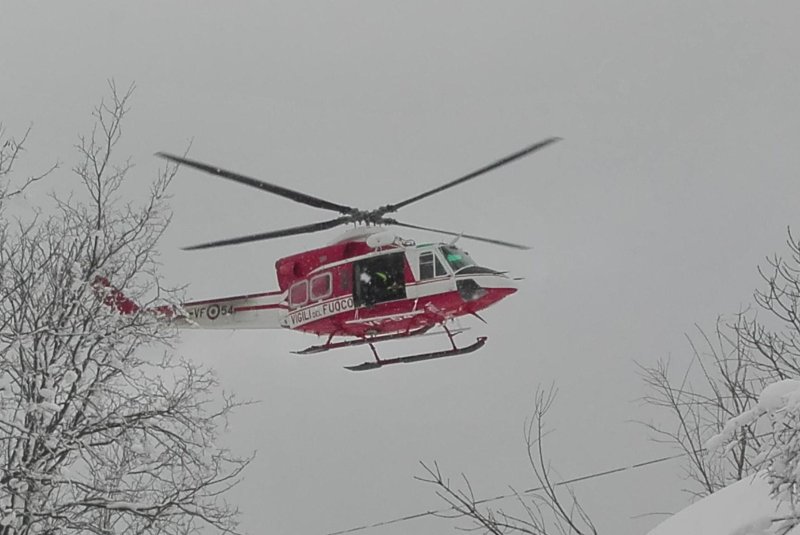With growth in offshore investments, from oil to wind, an industry report finds a positive spillover is expected for service helicopters. File photo by Matteo Guidelli/ EPA
Dec. 6 (UPI) -- Oil frontiers in Africa, legacy work in the Middle East and growth in renewables means positive spillover in the helicopter sector, an industry report found.
A report published by the Westwood Global Energy Group found fleet utilization for helicopters servicing offshore installations hit a low point earlier this year. Lower crude oil prices ate into the appetite for offshore work somewhat, though looking ahead, Westwood said growth is imminent.
"The Middle East is a key hotspot for helicopter operations in the coming five years with a 20 percent increase in overall activity between 2018 and 2022," Steve Robertson, a Westwood research director said in a statement. "In Latin America, activity has nearly halved during the downturn, but will rebound quickly, primarily driven by activity in Brazil."
Westwood said it expects fleet utilization to improve by as much as 59 percent next year, in part because of growth in emerging oil frontiers like East Africa, Guyana and the Mediterranean Sea.
In October, U.S. energy company Hess Corp. shed assets across a wide portfolio range to help fund operations at the Liza field in Guyana. Working alongside Exxon Mobil, the company said it would cost about $3.2 billion to develop the broader offshore Liza field, which may contain as much as 2.75 billion barrels of oil equivalent.
Hess said Guyana would yield "a decade plus of returns-driven growth."
Elsewhere, Norwegian energy company Statoil this week submitted formal development plans for its Johan Castberg field in the Barents Sea, a field estimated to hold at least 450 million barrels of oil equivalent. Field development is expected to have industry-wide impacts for northern Norway, with the port city of Hammerfest serving as a supply and helicopter base.
For renewables, Westwood said the growth for offshore wind should offer "a significant opportunity" for the helicopter fleet. By its estimate, growth in offshore wind translates to $119 million for helicopter spending through 2022.
"As the next generation of projects becomes commercially competitive and developers build further from shore, clusters of projects will likely share infrastructure and logistics," Robertson said of wind. "Helicopter operators that get in early will benefit from this future growth."
Sikorsky in January grounded its S-92 service helicopters briefly following a December incident that left router damage to the West Franklin platform in the North Sea, operated by French supermajor Total. Statoil stopped using the Airbus H225 Super Puma helicopter after a fatal April 2016 crash left more than a dozen of its employees dead in one of the worst incidents of its kind in nearly 20 years. After the crash, the company said it made up for the shortfall with the Sikorsky S-92.















